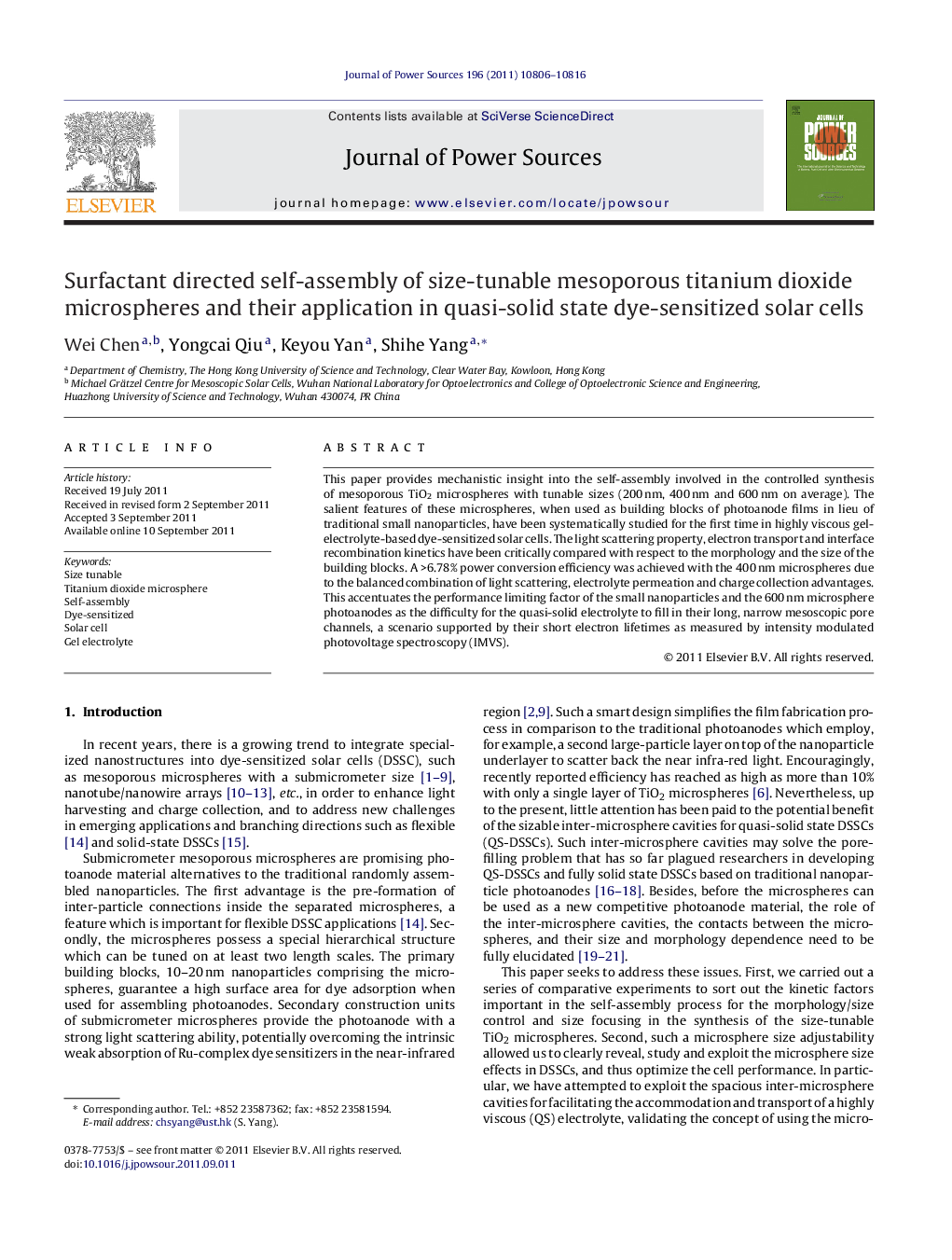| Article ID | Journal | Published Year | Pages | File Type |
|---|---|---|---|---|
| 1293282 | Journal of Power Sources | 2011 | 11 Pages |
This paper provides mechanistic insight into the self-assembly involved in the controlled synthesis of mesoporous TiO2 microspheres with tunable sizes (200 nm, 400 nm and 600 nm on average). The salient features of these microspheres, when used as building blocks of photoanode films in lieu of traditional small nanoparticles, have been systematically studied for the first time in highly viscous gel-electrolyte-based dye-sensitized solar cells. The light scattering property, electron transport and interface recombination kinetics have been critically compared with respect to the morphology and the size of the building blocks. A >6.78% power conversion efficiency was achieved with the 400 nm microspheres due to the balanced combination of light scattering, electrolyte permeation and charge collection advantages. This accentuates the performance limiting factor of the small nanoparticles and the 600 nm microsphere photoanodes as the difficulty for the quasi-solid electrolyte to fill in their long, narrow mesoscopic pore channels, a scenario supported by their short electron lifetimes as measured by intensity modulated photovoltage spectroscopy (IMVS).
Graphical abstractFigure optionsDownload full-size imageDownload as PowerPoint slideHighlights► Kinetic control of self-assembly allowed size-tuning of mesoporous TiO2 microspheres. ► Comparative studies on these microspheres as photoanode material in gel electrolyte based dye-sensitized solar cell system. ► The hierarchical pore structure of the microspheres photoanodes proved of great benefit to gel electrolyte penetration. ► This together with other factors resulted in the 400 nm microspheres film achieving the best cell performance (η = 6.78%).
